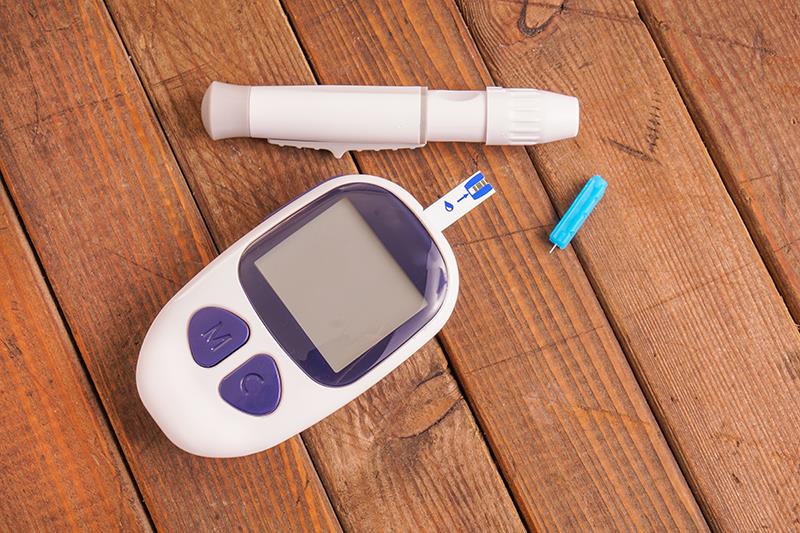Automated insulin delivery system beneficial for T2D management





An automated insulin delivery (AID) system appears to improve clinical outcomes in people with type 2 diabetes (T2D), with the pivotal SECURE-T2D trial showing substantial improvements in glycated haemoglobin, total daily insulin dose, and diabetes distress, without increasing the risk of hypoglycaemia.
In a cohort of 305 adults with T2D (mean age 57 years, 57 percent female, 24 percent Black, mean BMI 35 kg/m2), use of the Omnipod 5 AID system for 13 weeks yielded a 0.8-percent reduction in the primary outcome of HbA1c, from 8.2 percent at baseline to 7.4 percent at week 13 (p<0.001), reported Dr Francisco Pasquel from Emory University in Atlanta, Georgia, US. [ADA 2024, abstract 1904-LB]
The magnitude of HbA1c reduction was greater among people with higher baseline levels, with a 2.1-percent decrease seen for those with baseline HbA1c of ≥9.0 percent, Pasquel added. Furthermore, HbA1c improved across multiple subgroups, including those defined by race (although the effect was more pronounced for Hispanic or Latino patients), GLP-1 receptor agonist use, basal-only insulin therapy or multiple daily injections, continuous glucose monitoring (CGM) use, and meal dosing method (eg, carbohydrate counting, small/medium/large, fixed carb entry).
These data suggest that adults with T2D who require insulin therapy can greatly benefit from AID regardless of whether they are already using other glucose-lowering medication and that AID may provide an added benefit on top of the glycaemic benefit observed with CGM use, Pasquel pointed out.
Beyond glycaemic control
Other than HbA1c, other clinical outcomes also improved with the use of AID. Time in range increased by 20 percent, from 45 percent at baseline to 66 percent at week 13. Pasquel noted that with AID, patients were spending up to 5 additional hours per day within the target range (between 70 and 180 mg/dL)—an improvement that was driven by the decrease in hyperglycaemia.
Furthermore, blood sugar levels were maintained without significantly increasing the risk of hypoglycaemia. The rates of time below 54 mg/dL and time below 70 mg/dL were largely unchanged from baseline to week 13 (from 0.01 percent to 0.04 percent and from 0.2 percent to 0.2 percent, respectively).
Meanwhile, the amount of insulin dropped from an average of 0.80 to 0.57 U/kg/day at week 13, corresponding to an average decrease of 23 U/day. The proportion of participants on >100 U/day decreased by 64 percent. Mean boluses per day with AID was 3.2.
Finally, a significant and clinically meaningful improvement in diabetes distress, measured using the Type 2 Diabetes Distress Assessment System (T2-DDAS), was observed. The number of participants with T2-DDAS total score ≥2.0 dropped from 66 percent at baseline to 55 percent at week 13 (p<0.001). For example, the number of patients who reported that item number 6—When it comes to my diabetes, I often feel like a failure—was a moderate to very serious problem for them declined from 43 percent to 27 percent, according to Pasquel.
In terms of safety, “there were no instances of diabetes-related ketoacidosis or hyperosmolar hyperglycaemic syndrome. One episode of severe hypoglycaemia occurred, but this was unrelated to study device malfunction,” he said.
Thirteen additional serious adverse events were documented, but none were related to glycaemia or the study device.
The participants were highly satisfied with the AID system, with more than 70 percent saying that they could barely notice wearing the Omnipod 5 and expressing a desire to continue using it after the study. Finally, 90 percent said that they would recommend the AID system to a family member or a friend.
Potential to transform T2D care
A tubeless insulin pump, the Omnipod 5 automatically adjusts insulin delivery based on CGM data. This delivery system is aimed at improving glycaemic control by responding to glucose levels in real-time and reducing the burden of manual insulin dosing for people with diabetes.
Given that insulin intensification may contribute to increased risks of severe hypoglycaemia and death, “AID in T2D may prove to be the optimal way to attain glycaemic targets and avoid hypoglycaemia,” Pasquel said.
Indeed, “the results from the SECURE-T2D trial underscore the potential of the Omnipod 5 AID System to transform diabetes management for adults with T2D. The substantial improvements in glycaemic control and quality of life, particularly among minority populations, are promising steps toward more equitable diabetes care,” he added.
SECURE-T2D was one of the most racially diverse studies in diabetes technology, including 24 percent Black and 22 percent Hispanic participants from 21 sites across the US. More than half (55 percent) of the population were on a stable dose of GLP-1 receptor agonists, 73 percent used multiple daily injections of insulin, 21 percent used basal-only insulin, and only 5.6 percent used an insulin pump at baseline. The participants were started on Omnipod 5 after an initial 14 days of standard therapy. They were allowed to eat and exercise with no restrictions and were given the option to bolus for blood glucose corrections only, for actual carbohydrate intake, or for a set carbohydrate regimen.
The next step in the study, according to Pasquel, is to assess long-term outcomes and the potential of a new solution to address other aspects of diabetes management. He added that ongoing analyses will aim to refine and enhance the system’s algorithms to maximize its benefits for users.